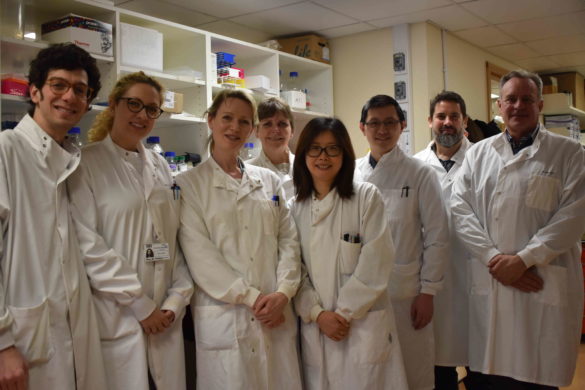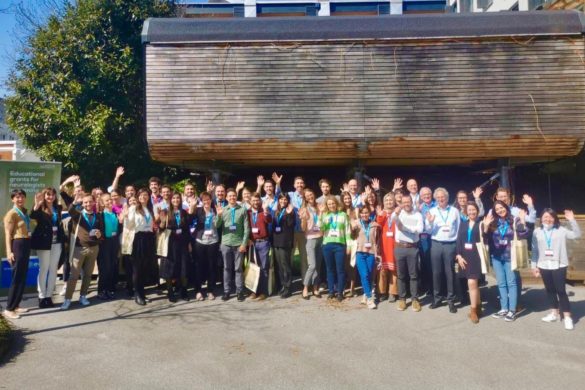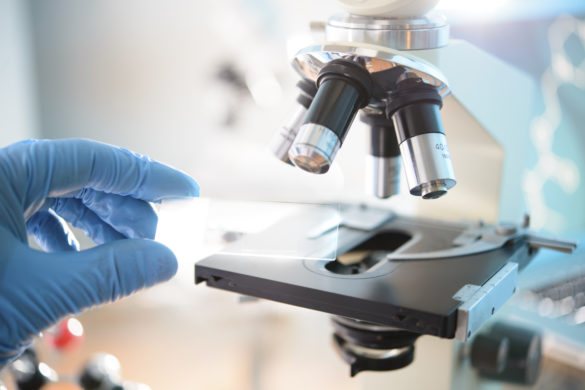Animal rights groups deny that animal research advances the study and treatment of human disease. A common tactic is to cite a body of literature (mostly anecdotally) purporting to document scientifically the uselessness of animal models, the suffering inflicted on animals and declaring alternatives to animal research as more effective for translating research into therapies to human disease.
It is broadly recognized across public health and welfare communities that animal research has yielded invaluable preventative and therapeutic strategies for human diseases. Some examples include AIDS, dementias including Alzheimer’s disease, multiple sclerosis, Parkinson’s disease, smallpox, polio, diabetes, tetanus, rubella, anthrax, rabies, and leprosy. Additionally, millions of animal lives have benefited from research studies performed in animals. Domestic cats and dogs now lead longer and healthier lives than ever before due to advances in infectious disease prevention (vaccines), disease diagnosis (ultrasound and MRI), and treatment (surgery). Healthier livestock have improved the socioeconomic status and health of people worldwide. These advances would not have occurred without the benefit of biomedical research involving animals.
It is also a fact that animal models provide highly complex biological information that cannot be obtained from alternative systems that circumvent the use of animals. It is impossible at this time to simulate in vitro or in silico complex aspects of central nervous system function or metabolic pathways. The scientific community relies on alternatives to animal research whenever possible, not only to spare animals’ lives, but also for cost effectiveness and bodies that regulate the use of animals in the laboratory. Generally, scientists are highly compassionate and sensitive to animal distress and suffering. Ultimately, the future health of the human population on earth as well as the future of animal wellbeing are inexorably linked to the use of animals in research.
According to these principles the American Academy of Neurology (AAN) and the European Academy of Neurology (EAN) offer the following reply to the EURL ECVAM EU public survey to identify all types of knowledge sources that might be relevant to Replace, Reduce or Refine (the ‘3Rs’) the use of animals for scientific purposes, to understand how such knowledge is currently disseminated and to highlight what could be done to fill knowledge gaps and enhance knowledge sharing.
The AAN and the EAN ensure that the use of animals in research is taken as a serious responsibility by their membership/stakeholders, and that animals are used only in circumstances where important and serious unmet medical needs are being investigated. This is done by highlighting the best translational neuroscience at their scientific meetings and in their scientific journals, and by providing information on animal research in their publications, web sites and through specific educational programs. Furthermore, our societies promote open debates on the subject of animal research, its scientific value and its perception by scientists, medical professionals, regulatory agencies, political decision-makers, patients and families and the general public.
More specifically on the ‘3Rs’:
Replace: Cell culture systems, including three-dimensional organoid cultures, and computer simulations have been implemented to address key questions in basic biology and disease modeling. Induced pluripotent human stem (iPS) cells are a particularly valuable new tool for studying basic biological processes such as differentiation and organogenesis, for investigating basic cellular mechanisms of disease and for testing the potential efficacy of targeted therapeutics. Recently, improved methods for editing the genomes of iPS cells have further increased the power of these systems1. Advanced bioinformatics that have improved the modeling of complex biological systems and the response to specific interventions, are finding applications to the diagnosis, prognosis and treatment of neurological diseases2,3.
Although these approaches complement and partially reduce the need for animal studies, their limitations preclude their substitution for all animal studies. Animal models do not reproduce all nuances of human physiology and pathology, but they remain the keystone for investigating basic neuroscience and neuropathological mechanisms and for pre-clinical trials of new therapies. Insights gained from animal models have revealed mechanistic factors for even very “human” conditions like autism, which could be reproduced in several key aspects in non-human primates4, but also in mice, providing initial proof-of-concept for potential therapeutic strategies5,6. Animal studies are pivotal through all stages of the development and validation of new diagnostic tests, biomarkers and therapies, from discovery to optimization7, for previously intractable diseases such as Parkinson’s disease, Alzheimer’s disease, Huntington’s chorea, ataxias, multiple sclerosis and advanced brain cancers (witness the recent miraculous recovery of President Carter after new age immunotherapy).
Reduce: Researchers carefully select the best available model systems for their studies, while continuing to develop alternative and complementary models to more effectively address their questions. The quest for the best science will reduce the use but not eliminate the need for animals in biomedical research. Our societies strongly support these efforts, while recognizing the continuing need for animal experimentation as an essential part of neurological and other types of research.
Refine: Study design in animal experiments is rigorous, incorporating scientific principles, concern for animal welfare and economic efficiency. Experimental planning requires the existence of a robust scientific background, in-depth knowledge of the characteristics of the utilized model, a clear definition of endpoints, power calculations to define appropriate cohort size (also contributing to ‘Reduce’), use of appropriate controls, safety monitoring and accurate data analyses. Furthermore, the use of advanced new technologies for non-invasive in vivo structural, functional and metabolic imaging, as high magnetic field (up to >21 T) magnetic resonance imaging (MRI), chemical exchange saturation transfer (CEST) MRI, contrast agents that are responsive to enzyme activity, to name a few, is leading to a significant improvement in data collection while decreasing stress and preventing pain of experimental animals. Maintenance of high quality standards in animal studies ensures the protection of animal welfare, is essential to obtain scientifically sound results8 and is required by regulatory agencies 9.
References
- Hendriks, W. T., Warren, C. R. & Cowan, C. A. Genome Editing in Human Pluripotent Stem Cells: Approaches, Pitfalls, and Solutions. Cell Stem Cell 18, 53–65 (2016).
- Le Masson, G., Przedborski, S. & Abbott, L. F. A Computational Model of Motor Neuron Degeneration. Neuron 20, 975-988 (2014).
- O’Leary, T., Williams, A. H., Franci, A. & Marder, E. Cell types, network homeostasis, and pathological compensation from a biologically plausible ion channel expression model. Neuron 82, 809–821 (2014).
- Liu, Z. et al. Autism-like behaviours and germline transmission in transgenic monkeys overexpressing MeCP2. Nature 530, 98-102 (2016).
- Sztainberg, Y. et al. Reversal of phenotypes in MECP2 duplication mice using genetic rescue or antisense oligonucleotides. Nature 528,123-126 (2015).
- Mei, Y. et al. Adult restoration of Shank3 expression rescues selective autistic-like phenotypes. Nature 530, 481-484 (2016).
- Denayer, T., Stöhr, T. & Van Roy, M. Animal models in translational medicine: Validation and prediction. New Horizons in Translational Medicine 2, 5–11 (2014).
- Perrin, S. Make mouse studies work. Nature 507, 423–425 (2014).
- van Meer, P. J. K., Graham, M. L. & Schuurman, H.-J. The safety, efficacy and regulatory triangle in drug development: Impact for animal models and the use of animals. Eur. J. Pharmacol. 759, 3–13 (2015).
Prof. Massimo Pandolfo, MD, FAAN
EAN Scientific Panel on Translational Neurology












